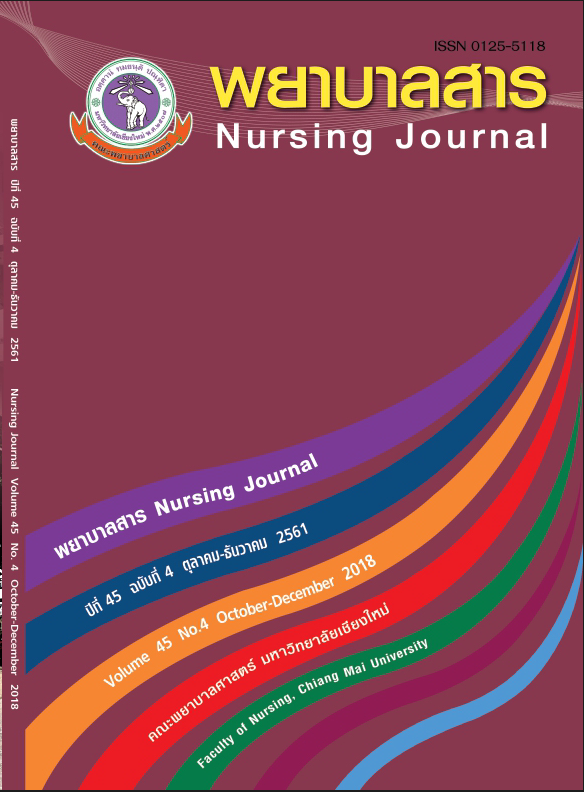Participation in Decision Making and Organizational Citizenship Behavior Among Nurses in Medical College Hospitals, Dhaka, The People’s Republic of Bangladesh
Keywords:
Participation in decision making, Organizational citizenship behavior, Staff nurseAbstract
Participation in decision making and organizational citizenship behavior is very important in the nursing profession leading to enhanced quality of services and professional development. The purposes of this descriptive correlational study were to identify the level of participation in decision making and organizational citizenship behavior among nurses, and to identify the relationship between participation in decision making (PDM) and organizational citizenship behavior (OCB) among nurses in Medical College Hospitals, Dhaka, the People’s Republic of Bangladesh. The sample consisted of 293 nurses who worked in the medical hospitals in Dhaka. Research instruments included the PDM Scale developed by Probst (2005) and the OCB Scale developed by Lee and Allen (2002). The reliability coefficient of the PDM scale and OCB scale for individual and OCB Scale for organization were .80, .81 and .80, respectively. Descriptive and Spearman’s Rank-Order coefficient statistics were used for data analysis.
The results of this study indicated that the level of overall PDM and overall OCB and OCB for individual and OCB for organization among nurses were at a moderate level ("X" ̅ = 20.96, SD = 5.55; "X" ̅ = 54.92, SD = 1.57; "X" ̅ = 28.40, SD = 7.31; and "X" ̅ = 26.51, SD = 8.69), respectively. There was a statistically significant strong positive correlation between PDM and overall OCB, OCB for individual and OCB for organization among nurses (r = .994, p=0.000; r = .987, p=0.000; r = .980, p=0.000), respectively. Nurse administrators may use these results to develop strategies to improve participation in decision making and organizational citizenship behavior
References
Bartlett, C. A., & Ghoshal, S. (1987). Managing across borders: New strategic requirements. MIT Sloan Management Review, 28(4), 7-17.
Directorate of Nursing Services. (2012). Report of the directorate of nursing services: 2012. Retrieved from http://www.dns.gov.bd
George, J. M., & Brief, A. P. (1992). Feeling good-doing good: A conceptual analysis of the mood at work-organizational spontaneity relationship. Psychological Bulletin, 112(2), 310-329.
Israel, G. D. (2003). Determining sample size. Institute of Food and Agricultural Sciences, University of Florida. Retrieved from http://edis.ifas.ufl.edu/PD
Karasek, R. A. (1979). Job demands, job decision latitude, and mental strain: Implications for job redesign. Administrative Science Quarterly, 24(2), 285-309.
Lee, K. & Allen, N. J. (2002). Organizational citizenship behavior and workplace deviance: The role of affect and cognitions. Journal of Applied Psychology, 87, 131-142
LePine, J. A., Erez, A., & Johnson, D. E. (2002). The nature and dimensionality of organizational citizenship behavior: A critical review and meta-analysis. Journal of applied Psychology, 87(1), 52-65. doi:10.1037/0021-9010.87.1.52
Mangold, K. L., Pearson, K. K., Schmitz, J. R., Scherb, C. A., Specht, J. P., & Loes,
J. L. (2006). Perceptions and characteristics of Registered Nurses involvement in decision making. Nursing Administration Quarterly, 30(3), 266-272.
Miller, K. I., & Monge, P. R. (1986). Participation, satisfaction, and productivity: A meta-analytic review. Academy of Management Journal, 29(4), 727-753. doi:10.2307/255942
Organ, D. W. (1988). Organizational citizenship behavior: The good soldier syndrome. Lexington, MA: Lexington Books
Podsakoff, P. M., Ahearne, M. and MacKenzie, B. S. (1997). Organizational Citizenship Behavior and the Quantity and Quality of Work Group Performance, Indiana University Bloomington Journal of Applied Psychology, 82, 2, 262-270
Podsakoff, P. M., MacKenzie, S. B., Paine, J. B., & Bachrach, D. G. (2000). Organizational citizenship behaviors: A critical review of the theoretical and empirical literature and suggestions for future research. Journal of Management, 26(3), 513-563. doi:10.1177/014920630002600307
Podsakoff, P. M., MacKenzie, S. B., & Organ, D. W., (2006). Organizational citizenship behavior: Its nature, antecedents, and consequences. London: Sage Publications.
Probst, T. M. (2005). Countering the negative effects of job insecurity through participative decision making: Lessons from the demand-control model. Journal of Occupational Health Psychology, 10(4), 320-329.
Siong, K. S. (2012). The level and effects of participation in decision making (PDM) on employee groups for the manufacturing and servicing sectors in Malaysia (Unpublished master’s thesis). University Tunku Abdul Rahman.
Somech, A. (2010). Participative decision making in Schools: A mediating-moderating analytical framework for
understanding School and Teacher outcomes. Faculty of Education, University of Haifa, Mount Carmel,
Haifa, Israel.
Yamane, T. (1967). Statistics: An introductory analysis. Retrieved from http://www.gobookee.net/get_book.php
Downloads
Published
How to Cite
Issue
Section
License
บทความที่ได้รับการตีพิมพ์เป็นลิขสิทธิ์ของวารสารพยาบาลสาร
ข้อความที่ปรากฏในบทความแต่ละเรื่องในวารสารวิชาการเล่มนี้เป็นความคิดเห็นส่วนตัวของผู้เขียนแต่ละท่านไม่เกี่ยวข้องกับมหาวิทยาลัยเชียงใหม่ และคณาจารย์ท่านอื่นๆในมหาวิทยาลัยฯ แต่อย่างใด ความรับผิดชอบองค์ประกอบทั้งหมดของบทความแต่ละเรื่องเป็นของผู้เขียนแต่ละท่าน หากมีความผิดพลาดใด ๆ ผู้เขียนแต่ละท่านจะรับผิดชอบบทความของตนเองแต่ผู้เดียว






